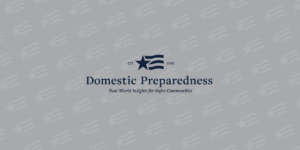

Listeria – When Food Bites Back
Dana Pitts
June 26, 2013
Food safety is a top priority at the U.S. Centers for Disease Control and Prevention (CDC). As the only agency tasked with tracking human cases of foodborne illness at the national level, the CDC works – in collaboration with the Food & Drug Administration (FDA) and the Food Safety & Inspection Service (USDA/FSIS) – 24/7 to stop and prevent dangerous outbreaks. Stakeholders involved in the U.S. food system, from farmers to regulators to consumers, rely on the CDC for information to help keep the food supply safe.

Governmental Laboratories: Protecting the Public’s Health
Chris Mangal
June 25, 2013
The Annual Meeting of the Association of Public Health Laboratories hosted more than 500 participants who share the common goal of improving public health efforts and laboratory preparedness. Through workshops and online resources, people from multiple disciplines can learn more about the role of public health laboratories in detecting and investigating emerging threats.

Promoting Food Security in Disaster Relief Situations
Scott McCallum
June 19, 2013
In 2011, 14.9 percent of U.S. households (17.9 million households) were “food insecure,” according to the U.S. Department of Agriculture’s study, Household Food Security in the United States in 2011. Those numbers equate to slightly more than 50 million Americans living in food-insecure households: 33.5 million adults and almost 17 million children. Many of the families queried in the study rely on food provided by various charities to feed themselves. Unfortunately, the nation’s charitable food supply chain itself is one of the most complex nutrition delivery systems in the entire world.

Early Detection of Zoonotic Emerging Infectious Diseases
Thomas Cotter and Earl Stoddard
June 19, 2013
In 2009, the H1N1 pandemic strain of influenza served as a dramatic wake-up call for biosurveillance experts around the world. Despite major advances in domestic and global surveillance capabilities, H1N1

Counter-Agroterrorism 101
Patrick P. Rose
June 19, 2013
Some biological agents – anthrax and ricin, for example – can be used as weapons against human targets; others specifically attack animals and food crops. Both types of attack, though, can have devastating effects on the economy and on the morale and overall wellbeing of a nation. To mitigate these threats, the public and private sectors must cooperate to recognize and close existing gaps.

SURVEY: Special Event Plans – When Things Go Wrong
Domestic Preparedness
June 16, 2013
DomPrep would like to know your opinions and experiences in response to key questions that were
developed as a result of earlier discussions. Special events occur in large and small communities – and
so do disasters. Your responses will help other emergency planners, responders, and receivers better
plan for and execute future events as well as the incidents within those events. Take the Survey Now!

FINAL REPORT: BIODEFENSE – The Threat, the Cost & the Priority
Stephen Reeves
June 13, 2013
The biothreat topic is important not only for the actual risk of attack, but also the perceived
risk. To be sufficiently prepared, a balance must be reached – for security, technology, and situational
awareness. This report addresses various key components of biodefense – the threats, the costs, and the
priorities.

Food Safety: An Emergency Manager’s Perspective
Kay C. Goss
June 12, 2013
Emergency management is an evolving discipline that requires a progressive emergency manager to
fulfill new and expanding requirements for success. Successful leaders in this field follow a systematic
problem-solving process and excel at coordinating multiple agencies and information sources rather than
simply being experts in one subject. The seven and a half traits discussed here describe the ultimate
emergency manager.

Protecting the Milk Supply During a Foreign Animal Disease Outbreak
Danelle Bickett-Weddle and Pamela Hullinger
June 12, 2013
With thousands of farms and millions of cattle scattered across the United States, regulators, dairy producers, and veterinarians strive to protect the nation’s food supply, including the milk supply chain from cow to breakfast table. Emergency preparedness planners, therefore, must work with agricultural suppliers to protect milk and other food products.

Defending the Food Supply: The Basic Recipe
Michéle Samarya-Timm
June 12, 2013
Protecting the food supply chain and defending against intentional contamination requires preventive/defensive efforts at all levels of government, particularly within local communities. All stakeholders therefore must be able to identify vulnerabilities, integrate federal requirements, and determine the resources and training needed to effectively protect the nation’s food supply.

